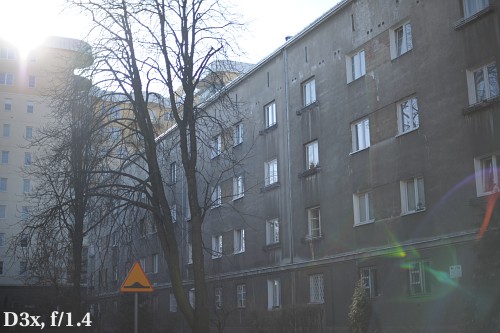Nikon Nikkor AF-S 50 mm f/1.4G
9. Ghosting, flares and transmission
 |
The lens’s optics consist of 7 groups of lenses so there were 14 air-to-glass surfaces to cover with anti-reflex coatings. Maximum transmission is reached for 650 nm wave length and it rises to a very high value of 96%. It means that on one surface Nikkor loses only about 0.3% - it is a characteristic value for multilayered, anti-reflex coatings of the highest quality.
Please Support UsIf you enjoy our reviews and articles, and you want us to continue our work please, support our website by donating through PayPal. The funds are going to be used for paying our editorial team, renting servers, and equipping our testing studio; only that way we will be able to continue providing you interesting content for free. |
- - - - - - - - - - - - - - - - - - - - - - - - - - - - - - - - - - - - - - - - - - - - - - - -
In fact, the only thing the tested lens can be accused of in this category is a significant transmission decrease toward the blue range of the spectrum. As an effect, the transmission for violet drops to about 80%. The loss of 20% of photons influences the lens’s performance while working against the light – you can see it in the photos below. Nikkor AF-S 50 mmf/1.4G handles flares badly working either with a big or a small matrix, no matter whether wide open or stopped down.
 |
 |






